
Top 10 Most Visited National Parks
Bucket List
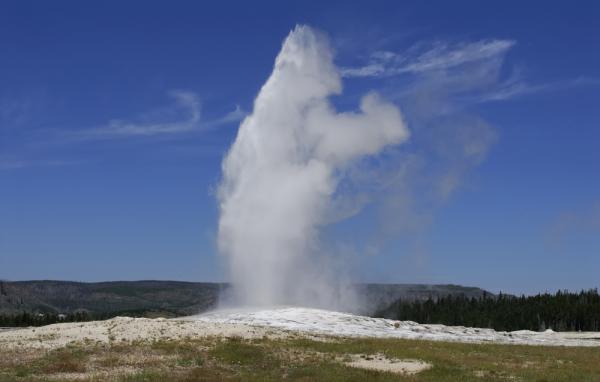
In 2009 almost 63 million visitors flocked to our country's stunning national parks. Just a handful of parks considered the gems of the United States National Park System and the names most familiar to the public received most of these visitors.
But these popular parks are more than clichéd family vacation destinations; look past the crowds and dig deeper into these household names to uncover the fascinating science of our national treasures.
Consider it your national park bucket list. If you don't go to any other parks, these are the ones to visit before you die.
Glacier National Park, Montana
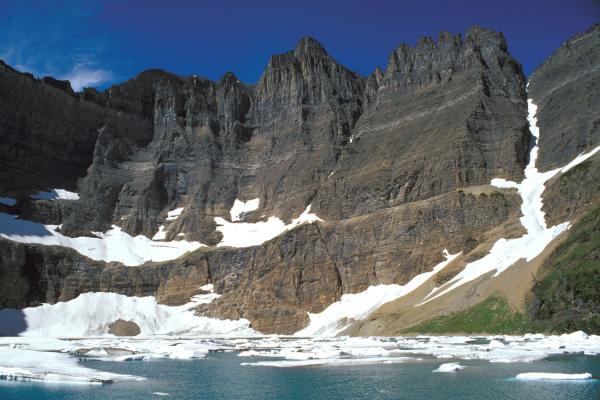
2,031,348 visitors per year
The nation's 10th national park is also its 10th most popular. Glacier National Park doesn't have many high peaks only six peaks over 10,000 feet (3,000 meters) but it is one of the best examples of glacier carved terrain from a time 10,000 years in the past. Visitors can view the bedrock and deposited materials exposed by receding glaciers and imagine ancient seas and the movement of giant slabs of Earth that pushed up the mountain range that is known to Native Americans as the "Shining Mountains" and the "Backbone of the World."
Glacier Park isn't just a nod to the past in fact, it has glaciers today and many can be seen from the roads around the park. Their blue ice and crevasses separate them from the snowfield above the timberline. The alpine glaciers melt and re-freeze to move snow downhill like a conveyor belt. This cycle creates U-shaped valleys that are impressively vertical.
Web site: http://www.nps.gov/glac/
Get the world’s most fascinating discoveries delivered straight to your inbox.
MORE INFO: 150 miles (240 km) north of Missoula in West Glacier, Mont. 59936. Phone: (406) 888-7800.
Acadia National Park, Maine
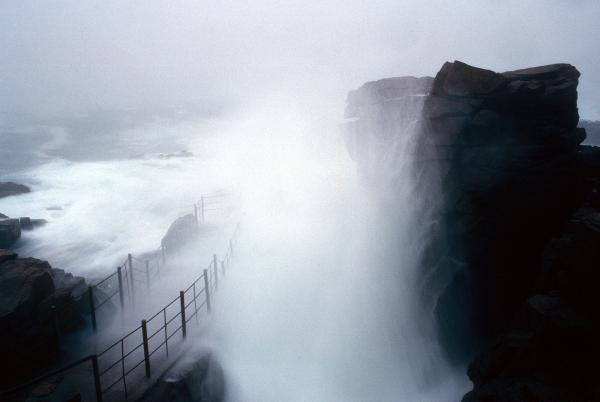
2,227,698 visitors per year
Along the rugged Maine coast lays a cluster of islands that make up Acadia National Park, the first national park east of the Mississippi River. Acadia is home to Thunder Hole, a geologic formation on Mount Desert Narrows where waves slap the end of the inlet, shooting water up to 40 feet (12 m) high and unleashing a dramatic thunderclap.
Acadia's coastline is constantly changing, although at a pace much too slow for the average visitor to notice, and is evidenced by the parks' cobblestone beaches. The cobblestones were formed as the ocean waves rounded down coastal rocks over thousands of years. Visitors to Acadia will occasionally find visually stunning sea stacks stacks of ocean-smoothed stones hundreds of feet tall that have been sculpted over eons.
Web site: http://www.nps.gov/acad/
MORE INFO: 280 miles (450 km) northeast of Boston in Bar Harbor, Maine 04609. Phone: (207) 288-3338.
Grand Teton National Park, Wyoming
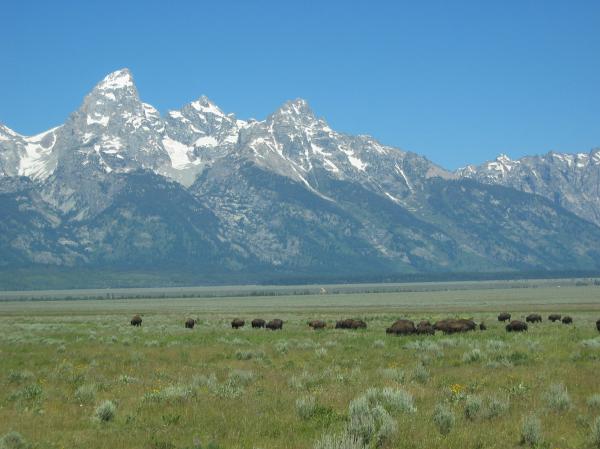
2,580,081 visitors per year
Glacial lakes lie at the base of the jagged Teton Mountain Range, which rises more than 7,000 feet (2,100 m) above the valley of Jackson Hole, Wyo. The park's elevation ranges from 6,400 feet (2,000 m) at the sagebrush valley to more 13,770 feet (4,200 m) at the summit of the Grand Teton. Don't visit in the winter, however, as Grand Teton National Park once recorded a record cold of minus 63 degrees Fahrenheit (minus 53 degrees Celsius) and the park is often covered with snow from early November to late April.
The park's powerful peaks make it hard to imagine that the area was once covered by a sea. However, most of the park contains extensive exposures of sedimentary formations, some over 1,000 feet (300 meters) thick and dating back to 500 million years ago. These formations are filled with the fossil remains of marine organisms. Scientists now know that the Teton Range was once the floor of an ancient sea teeming with algae, coral, clam-like shells known as brachiopods, and early ancestors of the crayfish called trilobites.
Web site: http://www.nps.gov/grte/
MORE INFO: 300 miles (483 km) north of Salt Lake City in Moose, Wyo. 83012. Phone: (307) 739-3300.
Cuyahoga Valley National Park, Ohio
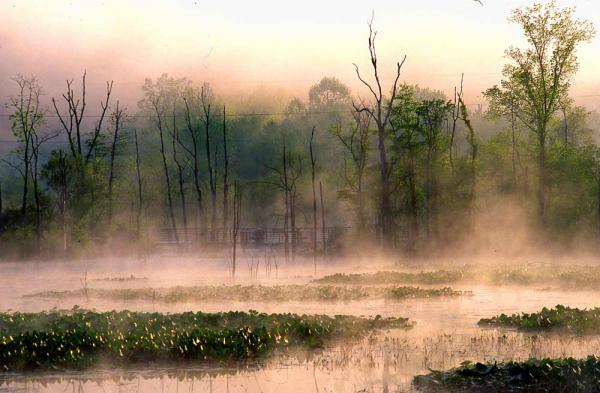
2,589,288 visitors per year
On the outskirts of Cleveland, Ohio, is one of the country's most popular national parks Cuyahoga Valley. Named for the winding Cuyahoga River, known as the crooked river, which snakes for 22 miles (35 km) through the parks' deep forests, rolling hills, and open farmlands. The Appalachian Plateau meets the Central Lowlands at Cuyahoga, marking the intersection of two distinct regions formed by multiple glaciations. The park is filled with closely spaced ravines that drop up to 600 feet (183 meters) over only a few miles, and funnel water into the river.
The Cuyahoga River has the infamous designation of being the "river that burned" in the late 1960s because it was so polluted, sparking an environmental movement. Large nearby urban areas have created pollution levels in the river that still prevent its recreational use. The park is also marred by large areas of disturbed land from years of human overuse. Many of these areas are under rehabilitation, and visitors can now enjoy viewing butterflies, birds and other animals return to a more natural habitat.
Web site: http://www.nps.gov/cuva/
MORE INFO: 15 miles (24 km) south of Cleveland in Brecksville, Ohio 44141. Phone: (330) 657-2752.
Rocky Mountain National Park, Colorado
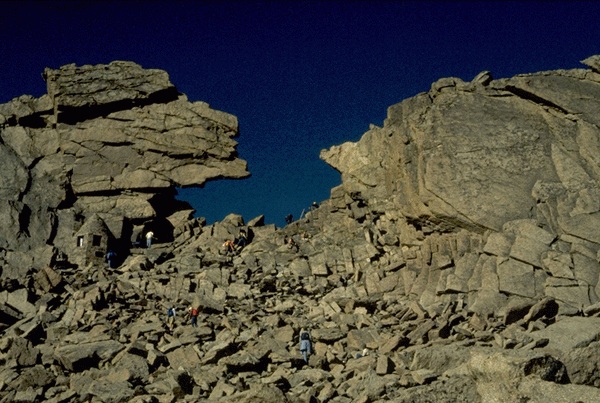
2,822,325 visitors per year
With more than 60 peaks soaring over 12,000 feet (3,600 m), Rocky Mountain National Park is one of the nation's most popular spots for adventurous outdoor enthusiasts. Elevations range from 8,000 feet (2,400 m) in the wet, grassy valleys to 14,259 feet (4,400 m) at the top of Longs Peak, which makes Rocky Mountain the highest national park in the United States.
The park is considered a living laboratory for anyone seeking to learn about the Earth. Igneous rock (formed through volcanism) and metamorphic rock (formed by the squeezing pressures deep in the Earth's crust) are what's inside the glacier formed peaks and deep valleys. Visitors to the park can explore the ebb and flow of glaciers over the last 18,000 years by touring the Rocky Mountain landscape. The mountains aren't the only thing that captivates visitors; elk, mule deer, moose, black bears and cougars all roam the park as well.
Web site: http://www.nps.gov/romo/
MORE INFO: 70 miles (113 km) northwest of Denver. Estes Park, Colo. 80517. Phone: (970) 586-1206.
Olympic National Park, Washington

3,276,459 visitors per year
Pacific Ocean beaches, rain forest valleys, and glacier-capped peaks are all found at Olympic National Park. The park was established to protect the area's disappearing forests, including some of the most spectacular examples of primeval temperate rain forest in the United States. Bigleaf maples in the rain forest are covered with mosses, ferns and spike-mosses on their trunks and branches.
The park also protects the largest unmanaged herd of Roosevelt elk in the world, and was almost named "Elk National Park." The park is home to the Olympic marmot endemic species, which is only found in the Olympic Mountains. Marmots relatives to groundhogs can often be caught sunning near their burrows.
Web site: http://www.nps.gov/olym/
MORE INFO: 85 miles (136 km) west of Seattle in Port Angeles, Wash. 98362. Phone: (360) 565-3130.
Yellowstone National Park, Wyoming
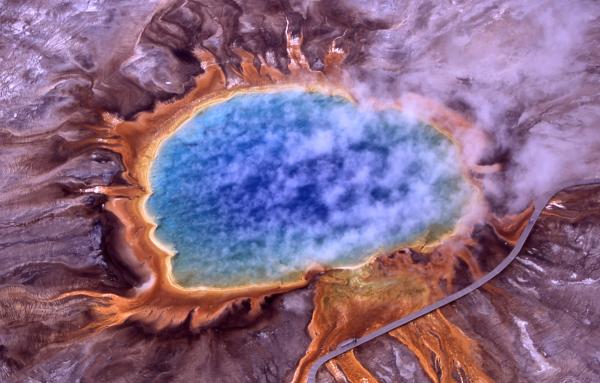
3,295,187 visitors per year
Yellowstone is America's and the world's first national park and home to wildlife such as grizzly bears, wolves, bison and elk. It was named after the Yellowstone River. The parks' famous collection of water-spewing geysers makes up nearly 60 percent of the world's geysers. The famous Old Faithful is a cone geyser in Wyoming that can shoot up to 8,400 gallons (32,000 liters) of piping hot water up to 185 feet (56 meters) into the air. The water works can last up to 5 minutes long. Eruptions are currently about 90 minutes apart.
Geysers are temporary geological features, lasting only a few thousand years. Intense volcanic heat, underground water, and natural geologic plumbing fractures, fissures and other open spaces in rock through which the heated water can escape are required to create a geyser. As the water boils underground, a column of water and steam is blasted out of the geyser's opening. Yellowstone has more to offer than just geysers of course; the park covers more than 3,472 square miles (8,987 sq km) filled with lakes, canyons, rivers and mountain ranges.
Web site: http://www.nps.gov/yell/
MORE INFO: Yellowstone National Park, Wyo. 82190-0168. Phone: (307) 344-7381.
Yosemite National Park, California
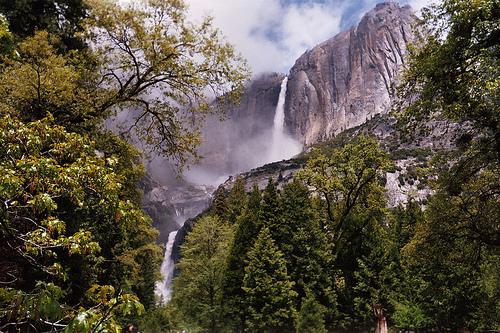
3,737,472 visitors per year
As one of the first wilderness parks in the United States the park is over 95 percent wilderness Yosemite is best known for its waterfalls, deep valleys, granite cliffs, and ancient giant sequoias and redwoods. The Merced River spills into Vernal Fall, a spectacular geologic feature. Yosemite is a glaciated landscape, or one formed when glaciers reshaped the underlying rocks, which created U-shaped canyons, jagged peaks, rounded domes, waterfalls and moraines.
Rock falls are a regular part of the Yosemite Valley, and at least 600 rock falls have occurred in the park during the past 150 years. Evidence is found in the massive piles of "talus" or rock debris at the base of Yosemite Valley's cliffs. Unstable rocks are created when tectonic stresses the result of big slabs of the Earth pressing against each other and erosion cause granite rocks to fracture. Over the years, water flowing through these fractures, ice freezing and thawing, earthquakes and vegetation can cause the loosened rocks to fall. Falling rocks and snow during the winter can close some trails, so visitors should check with the park rangers before setting off into Yosemite.
Web site: http://www.nps.gov/yose/
MORE INFO: 190 miles (306 km) east of San Francisco in Yosemite National Park, Calif. 95389. Phone: (209) 372-0200.
Grand Canyon National Park, Arizona

4,348,068 visitors per year
Grand Canyon National Park encompasses nearly 2,000 square miles (5,000 sq km) on the Colorado Plateau in northwestern Arizona. The Grand Canyon is one of the most studied geologic landscapes in the world. The canyon is a geologic record of three of the four eras of geologic time, contains a rich fossil record, diverse geologic features and numerous caves. The exact age of the Grand Canyon or how long ago it was carved out by flowing rivers is hotly debated.
The Grand Canyon was carved by the Colorado River and averages 4,000 feet (1,200 meters) deep for its entire 277 miles (445 km). At its deepest point the canyon drops 6,000 feet (1,800 meters), and is over 15 miles (24 km) wide at its widest point. The park is also an indispensable wildlife refuge: More than 1,500 plant, 355 bird, 89 mammalian and 47 reptile species are found in the park.
Web site: http://www.nps.gov/grca/
MORE INFO: 215 miles (346 km) north of Phoenix in Grand Canyon, Ariz. 86023. Phone: (928) 638-7888.
Great Smokey Mountains National Park, Tennessee
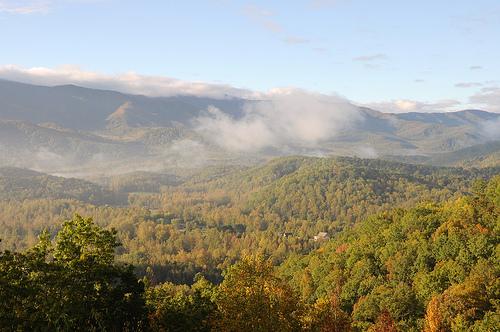
9,491,437 visitors per year
The Great Smoky Mountains National Park covers 800 square miles (2,000 square kilometers) of the southern Appalachian Mountains. More than 10,000 plant and animal species have been documented in the park unmatched for an area of similar size and climate. Scientists think that's just the tip of the ice berg though an additional 90,000 unknown species may be hiding in the park.
The Great Smoky Mountains are among the world's oldest mountain ranges at perhaps 300 million years old. The mountains' unique northeast to southwest orientation allowed species to migrate along their slopes during the climatic changes of the last ice age, around 10,000 years ago. In the southern reaches of the mountains are species common in the southern United States, and in the northern reaches you'll find species common in the northern states.
Web site: http://www.nps.gov/grsm/
MORE INFO: 220 miles (354 km) east of Nashville in Gatlinburg, Tenn. 37738. Phone: (865) 436-1200.
